‘SAHARA SURREAL’ - Andrew McConnell
Sep 04, 2011 Photography
Photo above: Minatu Lanabas Suidat / Journalist, pictured in Tifariti, in Polisario controlled Western Sahara (Sahrawi Arab Democratic Republic). Photo: Courtesy of The Empty Quarter gallery
Sahara Surreal trails the bandwidth of 21st century life in the Great Desert, unhinging stereotypes along the way. Andrew McConnell portrays the underexposed Saharawis, who turn plastic into gold with designer Florie Salnot. Photographer Philippe Dudouit is one of the few to visit the Tuareg rebels of Mali and Niger dwelling in zones off-limit to tourists due to unsettling political changes. Architect Magnus Larsson proposes a 6000 km-long barrier of organically shaped habitable structures by injecting Saharan soil with bacteria that petrify the sand. Aglaïa Konrad focusses on the programmed concrete-ization of the desert in Egypt’s struggling satellite cities. In his desert manufacturing experiments, Markus Kayser focuses the raw energy of the Saharan sun in laserbeams that cut wood and make glass from sand.
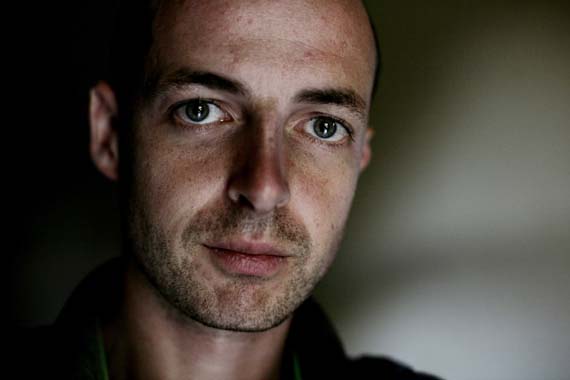
Andrew McConnell
Andrew McConnell photographed Saharawis from all walks of life, creating a fascinating portrait of this still disputed region.Western Sahara is Africa’s last open file at the United Nations Decolonisation Committee. Morocco invaded the territory in 1975 and forced colonial power Spain to withdraw without holding a UN sanctioned referendum on the future of the state. With Franco on his deathbed Spain had little desire for confrontation and so divided the land between Morocco and Mauritania, ignoring the pleas of the indigenous Saharawi people and a ruling by the International Court of Justice which found neither country had any sovereignty over the territory.
A Saharawi rebel group, the Polisario Front, which had formed a few years earlier to fight the Spanish occupation, declared the Saharawi Arab Democratic Republic (SADR) on 27 February 1976 and began an all out guerrilla war against the new occupiers. With heavy backing from Algeria the Polisario had a number of early successes, forcing the withdrawal of Mauritania in 1979. Morocco then took control of the entire country and the war continued into the 1980s. Thousands of Saharawis fled the invasion and set up refugee camps across the border in neighbouring Algeria where they remain to this day, their numbers having grown to some 170,000.
The Polisario’s gains were hampered in the mid-1980s with the building of a heavily mined 1,600 kilometre sand wall by Morocco, dividing Western Sahara in two and keeping the Polisario mostly confined to the inland desert. A ceasefire was signed in 1991 with the agreement that a referendum on self-determination would be held the following year. But the results of the UN identification process on who could vote were not to Morocco’s liking and almost twenty years later that referendum has yet to take place, while for the Saharawi people a sense of injustice, hopelessness, and anger grows ever stronger.
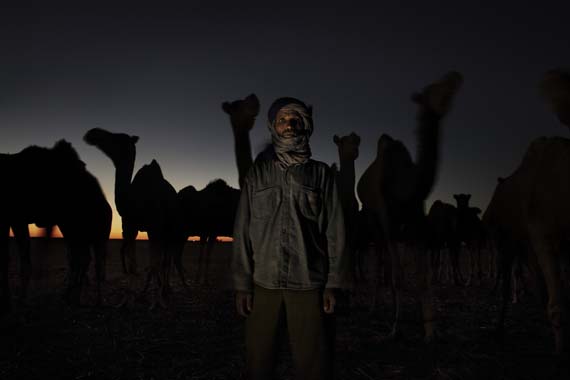
Lahbieb Embarek Ahmed / 47, camel worker, pictured in the desert near the Saharawi refugee camps, Algeria.
2010 © Andrew McConnell Photo: Courtesy of The Empty Quarter gallery
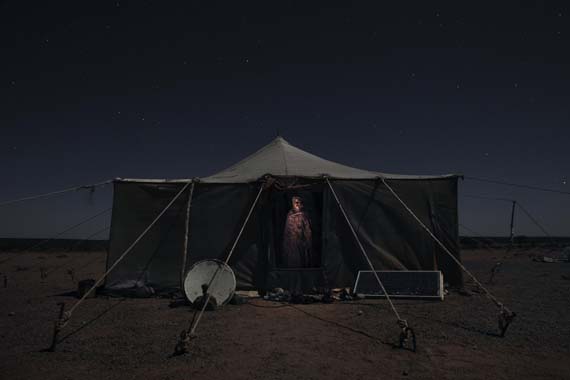
Dada Mohammed Kehel / 54, Bedouin Sahrawi pictured at her home in Tifariti, in Polisario controlled Western Sahara.
2010 © Andrew McConnell Photo: Courtesy of The Empty Quarter gallery

Djimi Elghalia / 48, human rights activist, pictured near El Aaiún city, in Moroccan controlled Western Sahara (Sahrawi Arab Democratic Republic).
2010 © Andrew McConnell Photo: Courtesy of The Empty Quarter gallery
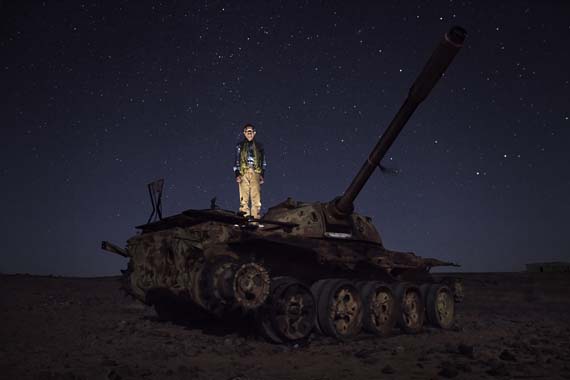
Hamdi Jaafar Mohammed / 46. Soldier of the Polisario Front, pictured in Tifariti, in Polisario controlled Western Sahara (Saharawi Arab Democratic Republic).
2010 © Andrew McConnell Photo: Courtesy of The Empty Quarter gallery
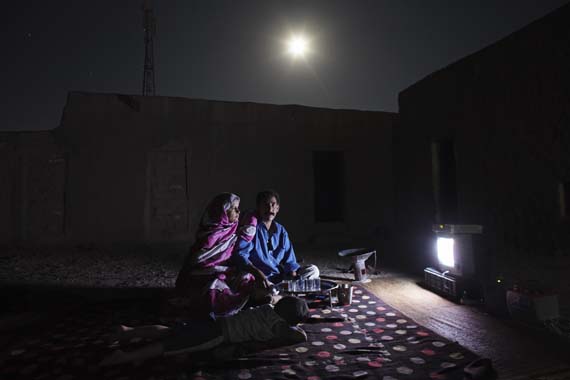
Ali Salem Salma / 41, statistician for the Saharawi government, pictured watching TV at home with his wife, Nabba, and four year old son, Khadda, in Smara refugee camp, Algeria.
2010 © Andrew McConnell Photo: Courtesy of The Empty Quarter gallery
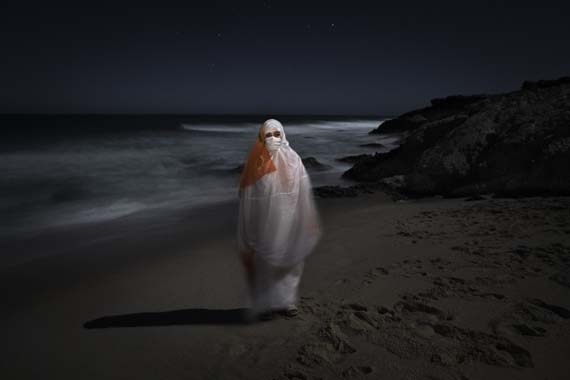
Name Withheld, Undisclosed Location / Name withheld, 26, photographed at an undisclosed location in Moroccan controlled Western Sahara (Sahrawi Arab Democratic Republic). The subject’s name and location have been withheld for fear of reprisals by the Moroccan government. Saharawis living under Moroccan control continually suffer oppression and human rights abuses.
2010 © Andrew McConnell Photo: Courtesy of The Empty Quarter gallery
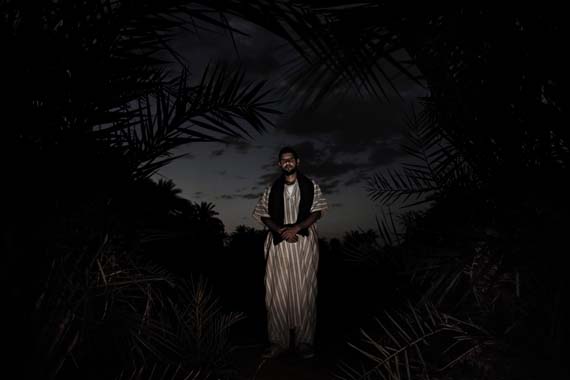
Saleh Mohamed Mulud Sidi / 35, Agricultural Engineer, pictured in Njeila Gardens, near the Saharawi refugee camps, Algeria.
2010 © Andrew McConnell Photo: Courtesy of The Empty Quarter gallery
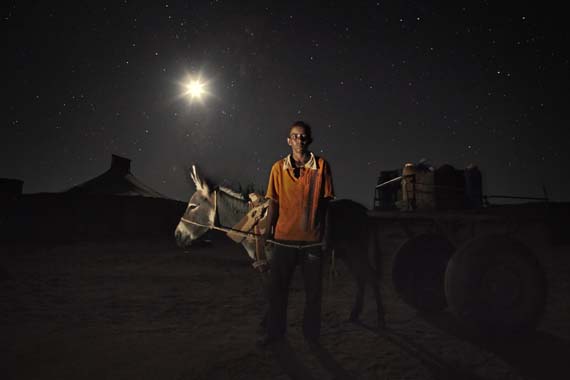
Mohamed Salem Ali / 18, water seller, in Dakhla refugee camp, Algeria.
2010 © Andrew McConnell Photo: Courtesy of The Empty Quarter gallery
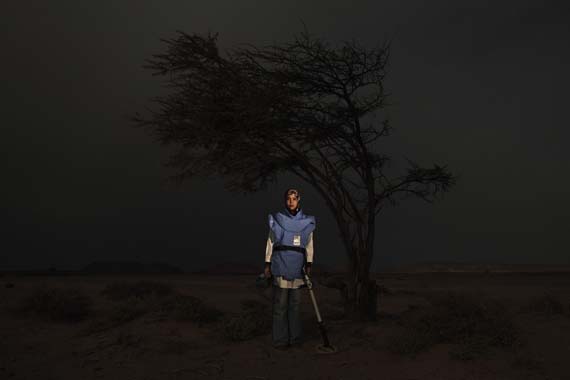
Mariam Zaide Amar / 24, deminer, pictured in Mehaires, in Polisario controlled Western Sahara (Sahrawi Arab Democratic Republic).
2010 © Andrew McConnell Photo: Courtesy of The Empty Quarter gallery

Chrifa Mohammed Salem / 6, pictured outside her home in Auserd refugee camp, Algeria.
2010 © Andrew McConnell Photo: Courtesy of The Empty Quarter gallery
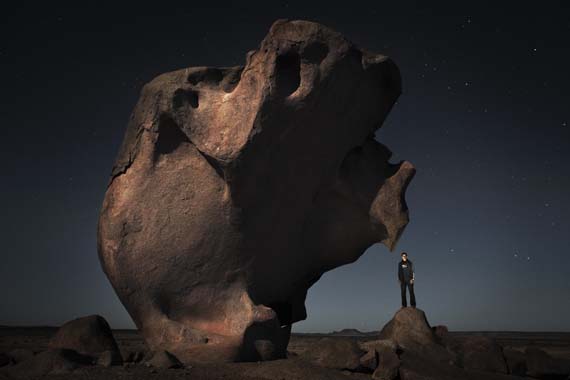
Salek Labieb Basher / 23, Friend of the Camel, pictured in the desert near Tifariti, in Polisario controlled Western Sahara.
2010 © Andrew McConnell Photo: Courtesy of The Empty Quarter gallery
The Empty Quarter is devoted to fine art photography, with an emphasis on works exploring the photographic dimensions of the Arab world. Within this framework, the gallery salutes the achievements of the world’s finest photographers, and aims to highlight the talent of photographers from the Middle East.
In addition to the regular exhibitions, the work of the gallery includes instigating long term projects, curating and organizing exhibitions in collaboration with international institutions and museums as well as publishing cutting edge photo books. Currently, the Empty Quarter is branching out in the region with projects ongoing in Qatar, Oman and Saudi Arabia.
The Empty Quarter
Gate Village, Bldg 02
P.O.BOX 506697
DIFC, Dubai, UAE
Comments
Add a comment